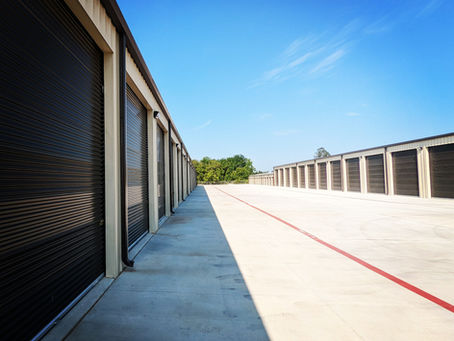The Commercial Construction Process: From Land Acquisition to Project Handover
- bgrady1980

- Jul 17, 2024
- 3 min read

When it comes to commercial construction, the process is complex and involves multiple stages. From deciding on the land to turning over the completed project to the owner, each step is crucial to ensure the project’s success. Here's an in-depth look at the commercial construction process.
1. Deciding on Land
Site Selection: The journey begins with identifying potential sites. Key factors such as location, zoning regulations, size, accessibility, and cost play a pivotal role in this decision.
Due Diligence: Once potential sites are identified, it's essential to conduct thorough due diligence. This involves environmental assessments, soil tests, and surveys to confirm the land is suitable for construction.
Acquisition: After a site is selected and vetted, the next step is negotiating and finalizing the purchase or lease of the land. This stage includes reviewing legal documents and securing financing if necessary.
2. Designing the Project
Conceptual Design: At this stage, architects and planners come into play to develop initial ideas and concepts. Preliminary sketches and plans are created to visualize the project.
Feasibility Study: A feasibility study is crucial to analyze the project's viability. This includes budget estimates, return on investment calculations, and risk assessments.
Schematic Design: Detailed sketches and layouts are developed, including floor plans, elevations, and site plans, to refine the initial concepts.
Design Development: The design is further refined with detailed specifications and materials selection. More precise cost estimates are also developed during this phase.
Construction Documents: Comprehensive drawings and specifications are prepared. These documents serve as the blueprint for contractors, covering architectural, structural, mechanical, electrical, and plumbing plans.
3. Permitting
Permit Application: With construction documents in hand, the next step is submitting them to local authorities. This application includes zoning approvals, building permits, and environmental permits.
Review Process: Authorities review the application to ensure compliance with building codes, zoning laws, and environmental regulations.
Approval and Permits: Once approved, necessary permits are obtained, allowing the project to proceed to the construction phase.
4. Construction
Pre-Construction: This phase involves selecting a general contractor, finalizing contracts, and establishing a construction timeline. A pre-construction meeting ensures all parties are aligned on expectations and responsibilities.
Site Preparation: The site is cleared and graded, temporary utilities are installed, and site access and security measures are set up.
Foundation: Excavation begins, followed by laying the foundation, which may include concrete slabs, footings, and pilings.
Structural Work: The building's framework is erected, encompassing steel or concrete structures, walls, and roofing.
Systems Installation: Electrical, plumbing, HVAC (heating, ventilation, and air conditioning), and other mechanical systems are installed during this phase.
Interior Work: Interior finishes such as drywall, flooring, painting, and fixtures are completed.
Exterior Work: Exterior elements, including windows, doors, siding, and landscaping, are finished.
Inspections: Regular inspections ensure compliance with building codes and standards. Any identified issues or deficiencies are addressed promptly.
Punch List: A punch list of final tasks and corrections needed before project completion is created and resolved.
5. Turning the Project Over to the Owner
Final Inspections: A final inspection is conducted to ensure all work is completed to the required standards and specifications.
Certificate of Occupancy: A certificate of occupancy is obtained from local authorities, permitting the building to be occupied.
Handover: Keys, manuals, warranties, and other documentation are transferred to the owner. A walkthrough is conducted to familiarize the owner with the building's systems and features.
Closeout: All contracts, payments, and administrative tasks are finalized. Permits are closed, and all documentation is completed.
Post-Construction: Ongoing support is provided for any issues that arise during the warranty period. Follow-up inspections are conducted as needed.
Each stage of the commercial construction process involves multiple stakeholders, including architects, engineers, contractors, subcontractors, suppliers, and regulatory authorities. By understanding and following these steps, the successful completion of the project is ensured, resulting in a well-constructed commercial building ready for use.














コメント